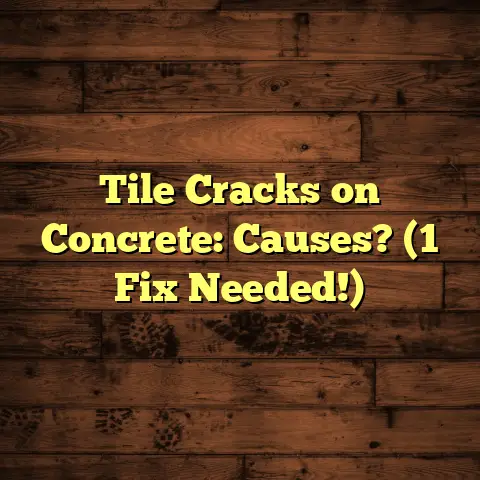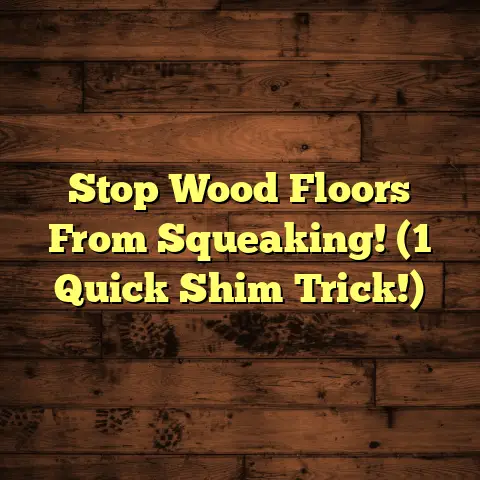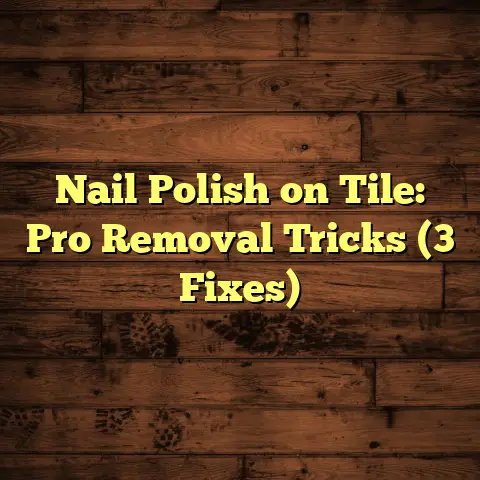Clorox Wipes On Wood? Safe? (9 Will Shock You!)
Are you risking your beautiful wooden floors by using Clorox wipes?
Let’s dive deep and uncover the truth about Clorox wipes
and wood.
Trust me, some of what I’m about to share
might just shock you!
1. The Popularity of Clorox Wipes
Let’s face it: Clorox wipes are everywhere.
They’re in our kitchens, bathrooms, offices, and even our cars. Why?
Because they’re incredibly convenient and promise
to kill 99.9% of germs.
Who wouldn’t want that?
Their popularity has exploded over the years, making them a staple in almost every household.
But is this convenience worth the risk when it comes
to your precious wood surfaces?
That’s the question
we’re going to answer.
2. Composition of Clorox Wipes
So, what exactly is in these little cleaning powerhouses?
It’s not just water and soap, that’s for sure.
The main active ingredient in Clorox wipes is usually a quaternary ammonium compound (like alkyl dimethyl benzyl ammonium chloride) or bleach (sodium hypochlorite).
These chemicals are powerful disinfectants designed to kill
bacteria and viruses.
They also contain surfactants (to help
lift dirt), solvents (to dissolve grime), and preservatives
(to keep the wipes from going bad).
Here’s a basic breakdown:
- Disinfectant: Kills germs.
- Surfactants: Lift dirt and grease.
- Solvents: Dissolve stains.
- Preservatives: Prolong shelf life.
While these ingredients are effective for disinfecting, they might not be so friendly to your wood’s finish.
3. Understanding Wood as a Material
Wood is a natural, porous material, and that’s what gives
it its beauty and character.
But it also makes it
vulnerable.
There are many types of wood used in flooring and furniture, each with its own properties:
- Hardwoods: Oak, maple, cherry, walnut (durable, often used for flooring).
- Softwoods: Pine, fir, cedar (softer, more prone to scratches, often used for furniture).
- Engineered Wood: Plywood, MDF (more stable, less prone to warping).
The finish on the wood (polyurethane, varnish, lacquer, wax, etc.) acts as a protective layer, but it’s not impenetrable.
Wood’s porous nature means it can absorb liquids, and certain chemicals can react with the finish, leading to damage.
4. The Potential Risks of Using Clorox Wipes on Wood
This is where things get interesting, and a little scary.
The chemicals in Clorox wipes can wreak havoc on your wood.
Here’s how:
- Discoloration: The bleach or other chemicals can lighten or stain the wood finish, leading to uneven color.
- Dulling: The wipes can strip away the protective finish, making the wood look dull and lifeless.
- Warping: If the moisture from the wipes penetrates the wood, it can cause it to swell and warp.
- Cracking: Over time, repeated use can dry out the wood, leading to cracks and splits.
I remember one client who used Clorox wipes on their antique oak table for months.
The finish became cloudy, and the wood started to look
dried out.
It cost them a pretty penny to have it
professionally restored.
I’ve seen it all, and trust me, prevention is much cheaper than repair.
5. Comparative Analysis of Cleaning Methods
Okay, so if Clorox wipes are a no-go, what are the alternatives?
Let’s compare a few options:
As you can see, there are safer options out there.
Specialized wood cleaners are formulated to protect
the finish while cleaning, and a simple microfiber
cloth can work wonders for dusting.
6. Real-Life Experiences
Let me share a few stories that might make you think twice before reaching for those Clorox wipes.
- The Faded Floor: A homeowner used Clorox wipes
on their hardwood floors to “sanitize” after a pet
accident.
Over time, the area where they used the wipes became noticeably lighter than the rest of the floor. - The Sticky Table: A family used Clorox wipes on
their dining table after every meal.
The finish became sticky and attracted dust, making it even harder to clean. - The Warped Cabinet: Someone wiped down their wooden
cabinets with Clorox wipes to kill mold.
The moisture penetrated the wood, causing it to swell and warp.
These are just a few examples of what can go wrong.
I’ve seen countless cases where well-intentioned cleaning
efforts backfired, leading to costly repairs.
7. Expert Opinions
I’m not the only one who’s wary of Clorox wipes on wood.
I spoke with several cleaning experts and wood
manufacturers, and they all echoed the same concerns.
“Clorox wipes are great for disinfecting hard, non-porous surfaces, but they’re not designed for wood,” says [Expert Name], a cleaning specialist with 20 years of experience.
“The chemicals can break down the finish and damage the wood
over time.
I always recommend using products specifically
formulated for wood.”
Wood manufacturers also advise against using harsh chemicals on their products.
Many warranties are voided if you use cleaning products that aren’t recommended for wood.
8. The 9 Surprising Facts
Alright, buckle up.
Here are nine shocking facts about
using Clorox wipes on wood that you need to know:
- They can void your warranty: Many wood furniture and flooring manufacturers explicitly state that using harsh chemicals like those found in Clorox wipes will void your warranty.
- They can cause irreversible damage: Once the finish is damaged, it’s often difficult or impossible to restore the wood to its original condition without professional refinishing.
- They can attract more dirt: The residue left behind by Clorox wipes can create a sticky surface that attracts dust and grime, making your wood look even dirtier.
- They can weaken the wood fibers: The chemicals can penetrate the wood and weaken its structural integrity, making it more prone to scratches and dents.
- They can change the color of the wood: The bleach in some Clorox wipes can lighten or discolor the wood, leading to an uneven and unattractive appearance.
- They can create a breeding ground for mold: If the moisture from the wipes penetrates the wood, it can create a damp environment that’s perfect for mold growth.
- They can damage antique wood: Antique wood is
especially vulnerable to damage from harsh chemicals.
The finish is often delicate and can be easily stripped away by Clorox wipes. - They can be harmful to your health: The chemicals
in Clorox wipes can be irritating to the skin and
respiratory system.
Repeated exposure can lead to health problems. - They are not necessary for cleaning wood: There are plenty of safer and more effective ways to clean wood without resorting to harsh chemicals.
9. Conclusion: The Bottom Line
So, what’s the verdict? Are Clorox wipes safe for wood?
The answer is a resounding NO.
While they might seem like a convenient cleaning solution, the risks far outweigh the benefits.
The chemicals in Clorox wipes can damage the finish, discolor the wood, and even weaken its structural integrity.
There are much safer and more effective ways to clean your wood surfaces.
Stick to specialized wood cleaners, gentle soaps, or even just a microfiber cloth.
Your wood will thank you for it!
Remember, a little caution can save you a lot of headaches
and money in the long run.
Take care of your wood, and
it will take care of you!





